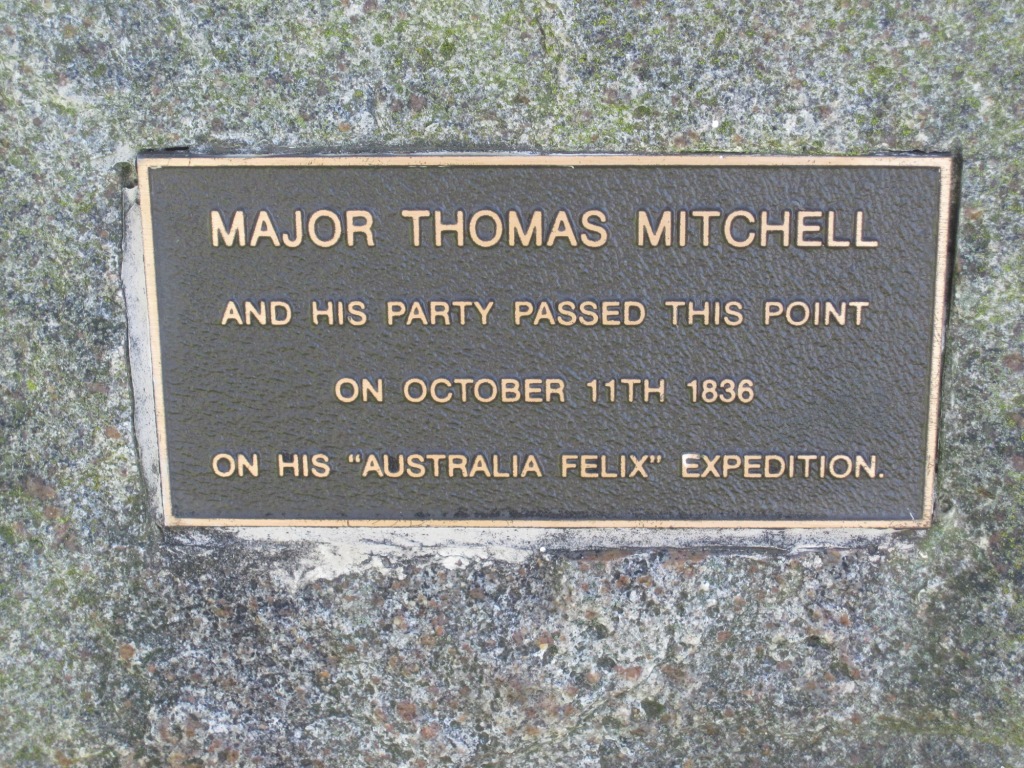
HOWLONG
(www.northeastvictoria.online)
The township of Howlong (just over the border in New South Wales, population 2500) is in a great location alongside the Murray River, and one of its ana-branch systems, about 28km west of Albury, 30km east of Corowa. Access is either via the Howlong Road (from the Murray Valley Highway) or from the Riverina Highway.
Major Thomas Mitchell passed by the site of Howlong during his 1836 exploration of this area, and there is a monument to Mitchell on the Victorian side of the Murray.
Two years later, the same location witnessed the first long haul mail delivery in Australia; this was when John Conway Bourke carried some overland mail from Sydney to the present day site of Melbourne.
See the Monument Australia website for photos of both of these monuments (link below).
Following these early events, the township was first settled in the early 1850's, and the Post Office was opened on 1 January 1861.
In the modern era, Howlong is a pleasing town to visit, with a great array of cafes, and a good range of shops and services. Items of interest include some art-deco, and colonial, architecture, the waterways, Pioneer Park, wall murals, the museum, the Mitchell Memorial and the mail delivery memorial.
The town has two caravan parks (see listing on the homepage) as well as several other accommodation options.
Major Thomas Mitchell
This is a much abbreviated account of Major Mitchell‘s professional life; for a more detailed account see (for example) the excellent entry on Wikipedia.
Thomas Mitchell was born in Scotland in 1792, and after service in the army (including time as a surveyor) he became Assistant Surveyor General of New South Wales. He worked alongside noted surveyor John Oxley, and when Oxley died in 1828, Mitchell became Surveyor General.
In this role he implemented many changes in the systems and procedures of the department, and one of the first roads surveyed under his leadership was the Great North Road. This was built during the years 1826-1836, largely by convict labour, and linked the Sydney region to the rapidly expanding Hunter Region.
Mitchell was knighted for his services to the colony, and was to subsequently lead four significant expeditions into the inland areas of Australia.

In 1831, Mitchell‘s first expedition headed north-west, towards present day Tamworth, making significant discoveries about the drainage of what we now call the Murray-Darling Basin.
The next (that is, second) expedition led westwards to the Darling River, hoping to fill in the gaps left from Charles Sturt’s expedition of 1829.
The group reached the confluence of the Bogan and Darling Rivers, and downstream of this point decided to build a stockade. This was named Fort Bourke, in honour of Richard Bourke, Governor of the colony.
Like Sturt’s earlier expedition, Mitchell’s crew had transported two boats with them, and these were used to navigate the Darling River downstream from ‘Bourke’ to the Menindee Lakes, and then return upstream.
The aim of Mitchell’s third expedition was to document the lower reaches of the Darling River, and as much as possible of the Murray River. This they succeeded in doing, as well as much of the Lachlan and Murrumbidgee Rivers.
Whilst much of these travels were dependent on Aboriginal people, and their knowledge, there was also significant conflict with the indigenous peoples. Amongst the conflicts that occurred, one of the most notable was during this third expedition (that is, the 1838 mass-shooting at Mount Dispersion).
This is now the heritage-listed Mount Dispersion Massacre Site Aboriginal Place, near Euston (more details on the Monument Australia website).
This third expedition reached the confluence of the Murray and Darling Rivers on May 31, and from here followed the Murray upstream to present day Swan Hill.
The terrain had now improved so much (aided by better soils, and several wet years) that Mitchell named this area of what was to become Victoria ‘Australia Felix’.
The group now headed south-west to the environs of the Grampians, and then the mouth of the Glenelg River, before returning slowly to Sydney.
Whilst his return to Sydney was greeted with much acclaim, he was later rebuked for his role in the killing of Aboriginal people.
Mitchell’s fourth expedition was in 1845, to Queensland, and he headed off to the Cape York area with a group that included Edmund Kennedy as second in command.
Mitchell’s route covered much of the upper catchment of the Darling River, and then he headed north to intercept some of Ludvig Leichhardt’s explorations.
He arrived back in Sydney during January 1847, and after a busy ‘retirement’ passed away in 1855.
Newspapers of the day commented that, For a period of twenty-eight years Sir Thomas Mitchell had served the Colony, much of that service having been exceedingly arduous and difficult. Among the early explorers of Australia, his name will occupy an honoured place.
Mitchell’s grave is at Camperdown Cemetery, his grave being maintained by the Seniors Group of Surveyors.
Howlong Visitor Information Centre
Intro Screen on a fresh browser page
COPYRIGHT © 1995-2020, Chris McLaughlin.